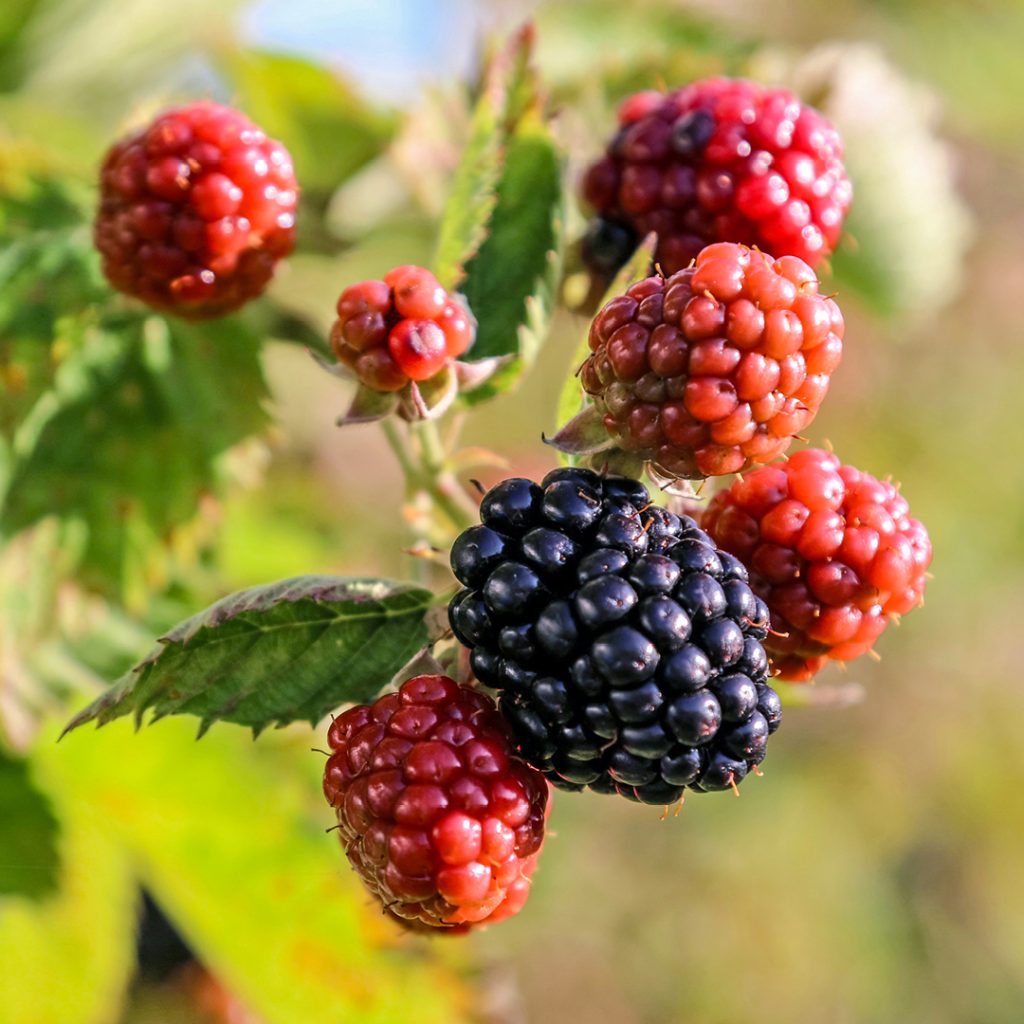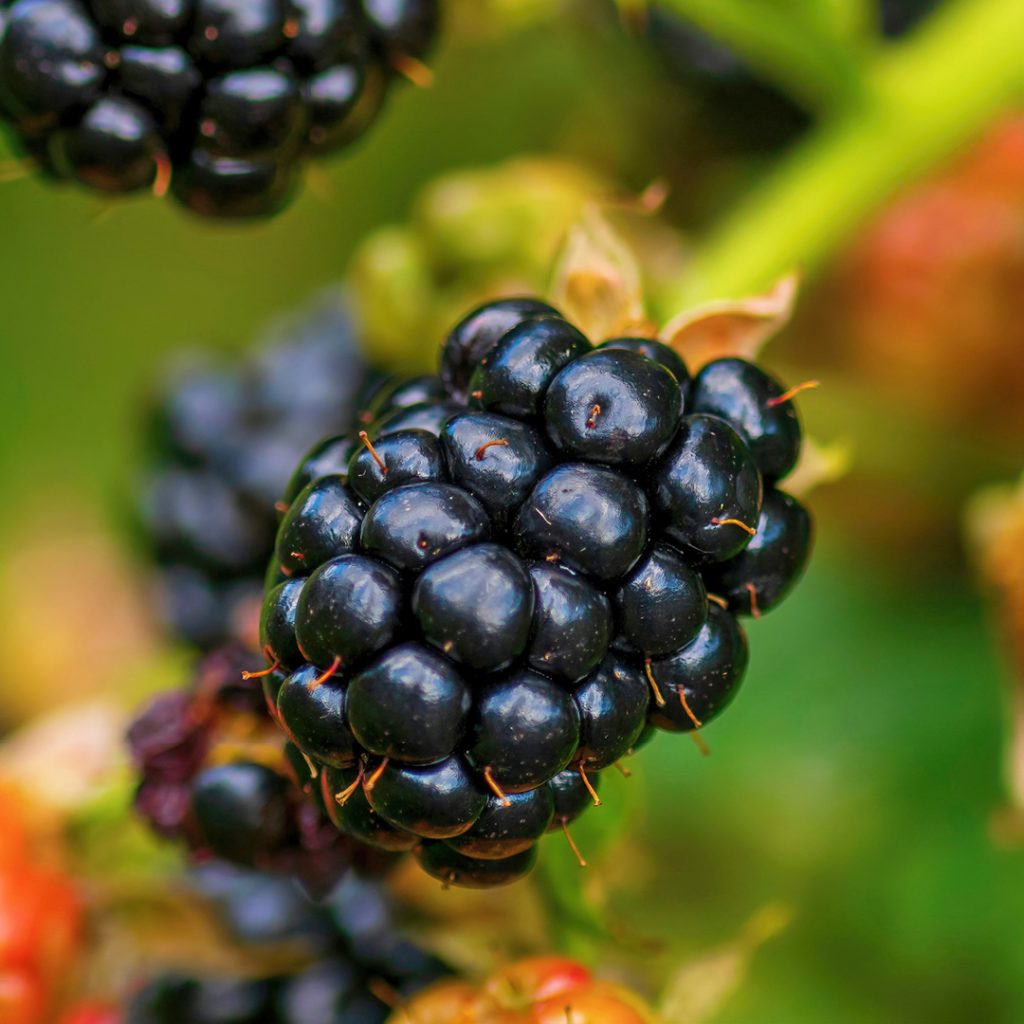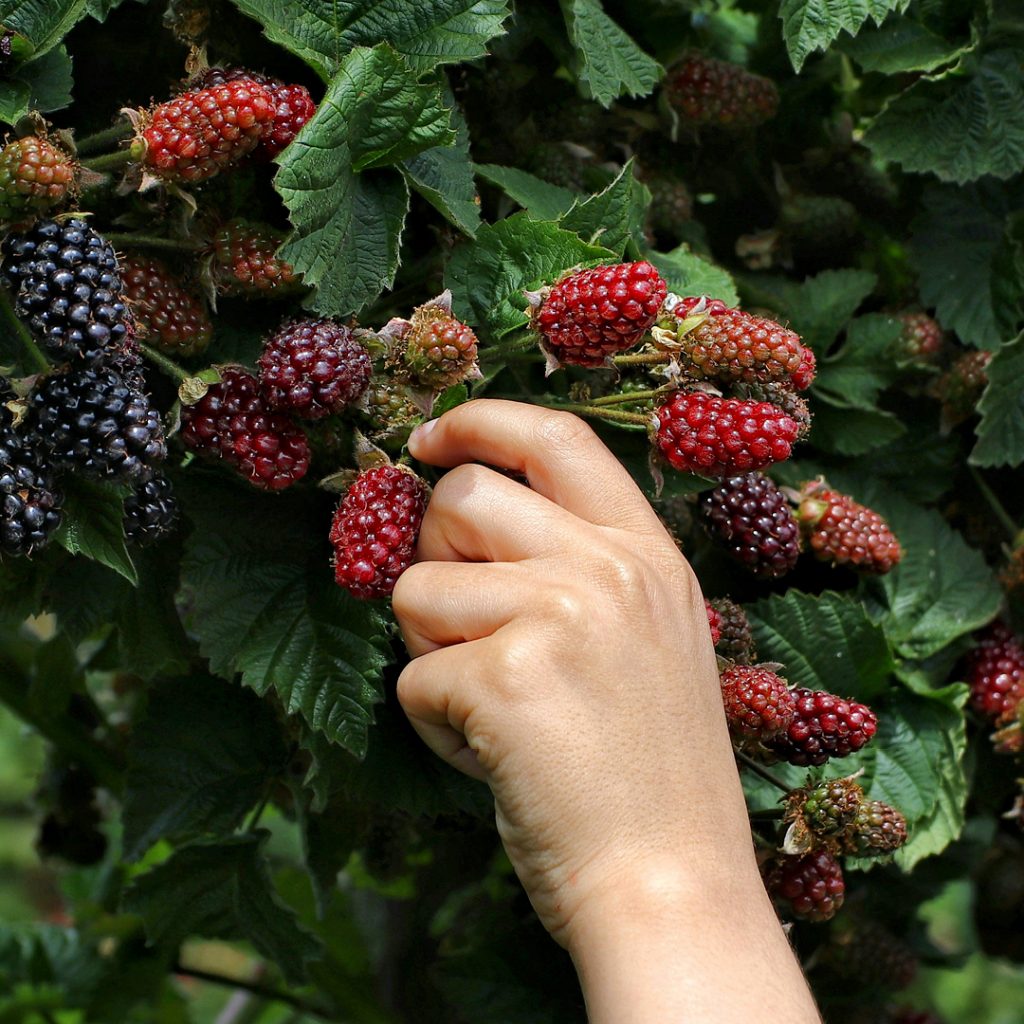Transform your garden into a sanctuary of sweetness with home-grown blackberries. Picture plucking ripe, juicy berries straight from the vine, indulging in their unmatched flavor while reaping their nutritional benefits. With minimal maintenance, these resilient plants provide a convenient, sustainable source of delicious fruit, fostering a deeper connection with nature and promoting a healthy lifestyle through gardening and proper nutrition.
Blackberry Dictionary
Some terms used in blackberry cultivation are not immediately understood by the home gardener. Our blackberry dictionary is meant to help you better understand these words to support your blackberry selection and cultivation efforts.
Cane: Refers to the long, woody stems that emerge from the crown of a blackberry plant. Canes can be either primocanes or floricanes, depending on their age and stage of growth.
Floricane: Refers to the second-year canes or shoots of a blackberry plant that have already borne fruit. Floricanes typically produce flowers and fruit in the current growing season.
Hardiness: A plant’s ability to withstand cold temperatures.
Primocane: Refers to the first-year canes or shoots that emerge from the crown of a blackberry plant. Primocanes typically do not produce fruit in their first year but develop fruiting laterals that bear fruit in the subsequent year.
Suckers: Adventitious shoots that emerge from the base of a blackberry plant, often arising from the roots or crown. Suckers can contribute to the spread of blackberry plants but may need to be managed to prevent overcrowding.
Thornless: This term describes blackberry varieties that lack thorns or have greatly reduced thorniness, making them easier to handle and harvest compared to thorny varieties.
Tipping: Tipping is pruning or removing the terminal portion of primocanes to encourage lateral branching and increase fruiting potential. It can help improve fruit yield and quality in some blackberry varieties.
Trellis: A support structure consisting of posts, wires, or other materials used to support and train blackberry canes for better growth, airflow, and ease of harvest.
These terms are commonly used in blackberry cultivation and can help growers better understand the practices and techniques involved in successfully growing blackberries.
Choosing the Right Varieties
With adequate care, blackberries can be grown in USDA Hardiness Zones 5 through 10. However, some varieties are more suited to colder or warmer climates within this range.
Varieties for Warmer End of the Range (Zone 8-10)
Prime-Ark Freedom: This variety is known for its early fruiting on first-year canes. It produces large, sweet berries and has good disease resistance.
Prime-Ark: This variety, like Prime-Ark Freedom, is a primocane-fruiting blackberry bred to produce fruit on first-year canes.
Osage: Osage is a thornless blackberry that produces high yields of large, flavorful berries and is highly resistant to diseases.
Kiowa: Kiowa is a thorny blackberry variety known for its excellent flavor. While it can tolerate a range of climates, it tends to perform well in warmer regions.
Natchez: Another primocane-fruiting variety, Natchez is known for its high yields and excellent flavor.
Varieties for Colder End of the Range (Zone 5-7)
Arapaho: Arapaho is a thornless, early-ripening blackberry variety that can handle colder temperatures well. It’s known for its excellent fruit quality.
Chester: Chester is a late-ripening blackberry variety. It produces large, sweet fruit and is known for its vigorous growth.
Triple Crown: Triple Crown produces large, flavorful berries and is resistant to many diseases.
Navaho: Navaho is a thornless blackberry variety bred to produce large, sweet berries and is known for its winter hardiness.
Darrow: Darrow is a classic blackberry variety. It produces medium to large fruit with a rich flavor and is well-suited for fresh eating or processing.
Hull Thornless: Hull Thornless produces large, sweet berries. It’s known for its vigorous growth and adaptability to a range of soil types.
Planting and Care Tips
Now that you’re familiar with blackberry terms and recommended varieties for your climate, it’s time to get planting! Follow these tips for successful growth and abundant harvests:
Site Selection
Choose a sunny location with well-drained soil for planting blackberries. Avoid low-lying areas prone to frost or poor drainage, as these can hinder plant growth.
Soil Preparation
Before planting, amend the soil with organic matter such as compost or aged manure to improve drainage and fertility. For optimal blackberry growth, aim for a slightly acidic soil pH of 5.5 to 6.5.
Planting Technique
Space blackberry plants 3-4 feet apart in rows, ensuring adequate airflow and room for growth. Plant them at the same depth as they were in their nursery containers, and water thoroughly after planting to settle the soil.
Pruning and Training
Blackberries require regular pruning to remove old canes and promote new growth. In late winter or early spring, prune out any dead or diseased canes, as well as any weak or overcrowded growth. Train the remaining canes onto a trellis or support system to encourage upright growth and easier harvesting.
Watering and Fertilizing
Keep blackberry plants consistently moist, especially during hot summer months. Apply a balanced fertilizer in early spring before new growth emerges, top-dress with compost, and add a layer of mulch to retain soil moisture and suppress weeds.
Harvesting and Enjoying
Blackberry plants typically begin bearing fruit in their second year and reach peak production by their third year. Harvest ripe berries when they easily detach from the stem with a gentle tug, usually from mid to late summer. Enjoy your freshly picked blackberries straight from the vine, or incorporate them into delicious recipes such as jams, pies, or smoothies.
Try adding blackberries to your fruiting favorites list this year. Not only are blackberries considered a superfood, loaded with vitamins, minerals, fiber, and antioxidants, but they are also easy and enjoyable to grow.



